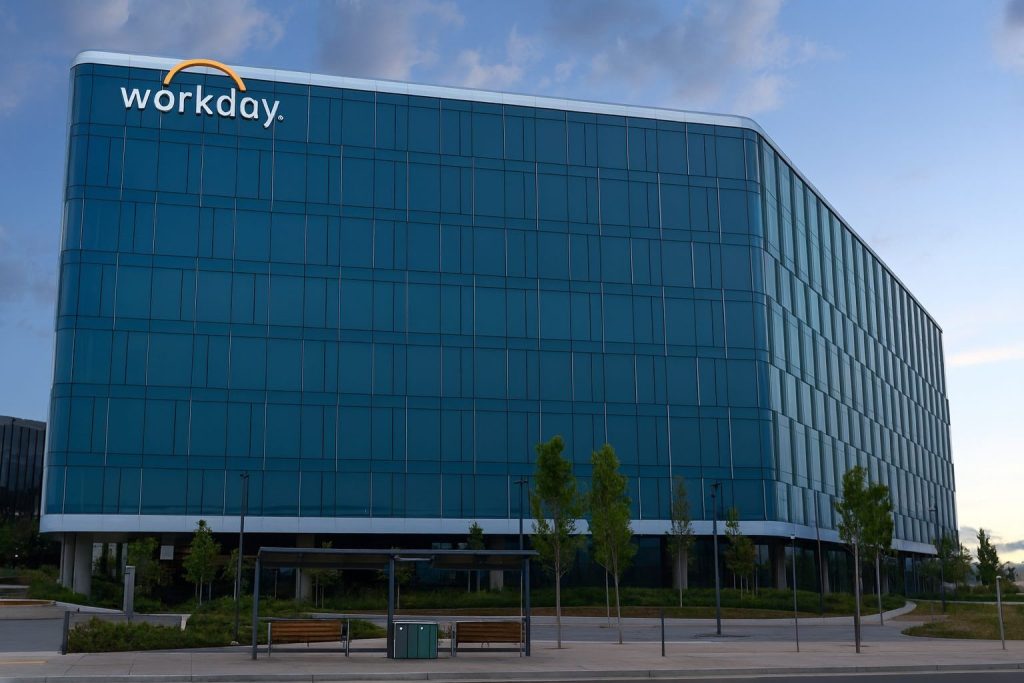Published: November 28, 2025
Deere & Company (NYSE: DE) is back in focus this Black Friday after a volatile week in which the iconic tractor maker delivered stronger‑than‑expected quarterly results but issued a cautious profit forecast for 2026, citing higher tariffs and a still‑weak farm economy. [1]
As of the latest trade on Friday, November 28, 2025, Deere stock is trading around $472.42, up about 0.5% on the day, as investors digest the earnings fallout in a holiday‑shortened U.S. session. [2]
Deere & Company stock price today (DE)
Based on the latest available intraday data for November 28, 2025:
- Last price: $472.42
- Change on the day: +$2.55 (about +0.54%)
- Intraday range: $463.21 – $473.65
- Opening price: $466.91
- Volume: just under 900,000 shares traded so far
Despite this modest rebound, Deere is still working through a post‑earnings hangover. Shares fell about 5–6% on Wednesday after the company’s fiscal 2026 profit outlook came in below Wall Street expectations, even as Q4 earnings and revenue beat consensus. [3]
Year to date, Deere remains in positive territory. MarketWatch estimates the stock was up around 17.6% in 2025 through Tuesday, outperforming the S&P 500’s roughly 15% gain. [4] Barchart data, using a slightly different cut‑off, shows about 10.9% year‑to‑date gains and 1.9% growth over the past 52 weeks, highlighting that DE has delivered only modest longer‑term appreciation from current levels. [5]
Q4 2025: Earnings beat, but profit down year‑over‑year
Deere’s latest results cover the fourth quarter of fiscal 2025, which ended November 2, 2025. [6]
From the company’s official earnings release:
- Q4 net sales and revenues:$12.39 billion, up 11% from $11.14 billion a year earlier
- Q4 net income:$1.07 billion, down 14% from $1.25 billion
- Diluted EPS:$3.93, versus $4.55 a year ago [7]
For the full fiscal year 2025:
- Worldwide net sales and revenues:$45.68 billion, down 12% year‑over‑year
- Net income attributable to Deere & Company:$5.03 billion, down 29% from $7.10 billion
- Full‑year diluted EPS:$18.50, versus $25.62 in fiscal 2024 [8]
While earnings and profit declined, Deere once again beat analyst estimates. Reuters reports that Q4 EPS of $3.93 topped consensus of about $3.85 per share, while revenue of roughly $12.4 billion exceeded expectations of around $9.85 billion. [9] MarketWatch notes this marked Deere’s 13th consecutive quarter of earnings beats, underscoring the company’s operational resilience even in a tougher macro backdrop. [10]
Segment performance: growth with margin pressure
Deere’s Q4 segment breakdown paints a nuanced picture: [11]
- Production & Precision Agriculture
- Net sales: +10% year‑over‑year to $4.74 billion
- Operating profit: down 8%; margins compressed as higher production costs and tariffs offset pricing gains
- Small Agriculture & Turf
- Net sales: +7% to $2.46 billion
- Operating profit: down 89%, reflecting sharply higher tariffs, warranty costs, and other production expenses
- Construction & Forestry
- Net sales: +27% to $3.38 billion
- Operating profit: +6%, aided by higher shipment volumes despite cost pressures
- Financial Services
- Net income: +69% year‑over‑year, driven by better financing spreads, lower credit‑loss provisions, and special items
In simple terms: sales are still growing, particularly in construction and forestry, but margins across the business — especially in small agriculture — are under pressure, largely due to tariffs and rising costs. [12]
2026 guidance: Tariff costs spike and the farm cycle hasn’t bottomed
The real driver of this week’s sell‑off is not the Q4 beat, but Deere’s weak guidance for fiscal 2026.
The company now expects: [13]
- Fiscal 2026 net income:$4.00–$4.75 billion
- Down from $5.03 billion earned in 2025
- Well below analyst estimates, which Reuters and MarketWatch peg at roughly $5.1–$5.3 billion
At the same time, Deere warned that tariff costs will roughly double: the pre‑tax tariff hit is projected around $1.2 billion in 2026, versus nearly $600 million in 2025. [14]
CEO John May has framed 2026 as “the bottom of the large agriculture cycle”, emphasizing that while large‑equipment demand remains soft, Deere is leaning on cost controls, inventory management, and growth in other segments to navigate the downturn. [15]
Industry and segment outlook for 2026
From Deere’s own outlook and supporting commentary: [16]
- Large Agriculture (U.S. & Canada): expected to be down 15–20% in fiscal 2026
- Small Agriculture & Turf: expected to be flat to up ~5%
- Construction & Forestry (U.S. & Canada):flat to up ~5% for equipment, with global forestry and road‑building roughly flat
At the segment level, Deere forecasts:
- Production & Precision Agriculture: net sales down 5–10%
- Small Agriculture & Turf: net sales up ~10%
- Construction & Forestry: net sales up ~10%
- Financial Services: net income around $830 million
This outlook confirms what many farm‑equipment investors feared: the big‑ticket tractor and combine market is still weakening, while smaller agriculture and construction businesses are doing much of the heavy lifting. Lower crop prices and higher input costs are pushing farmers toward rentals and used equipment instead of new machines, a dynamic Deere itself highlighted and that analysts see extending into 2026. [17]
Some research shops, such as CFRA, do not expect a full earnings recovery until fiscal 2027, suggesting the current downturn could be longer and deeper than previous cycles. [18]
How Wall Street is reacting on November 28, 2025
Despite the downbeat guidance, analyst sentiment toward Deere remains broadly positive, though more nuanced after this week’s news.
Recent moves from major firms include: [19]
- UBS
- Rating: Buy
- Price target: $535
- Rationale: Near‑term guidance confirms a cyclical trough, but UBS is looking ahead to a 2027 earnings recovery, arguing the pullback could offer opportunity for long‑term investors.
- Oppenheimer
- Rating: Outperform
- Price target raised from $512 to $531
- Focus: Long‑term structural tailwinds in precision agriculture and automation; confidence in Deere’s ability to manage through the cycle.
- RBC Capital
- Rating: Outperform
- Price target trimmed from $542 to $541 (a symbolic change, but still firmly bullish).
- Truist Securities
- Rating: Buy
- Price target nudged higher from $609 to $612, one of the Street’s most optimistic calls on DE.
- Evercore ISI
- Rating: In Line
- Price target cut from $487 to $458, reflecting disappointment that Q4 results and the earnings call did not deliver a clear positive turn in agricultural fundamentals and that near‑term earnings may stay under pressure.
Across about two dozen analysts following the stock, multiple data providers describe Deere’s consensus rating as “Moderate Buy” / “Overweight”, with an average price target around $525–$526 per share. That implies low double‑digit upside from today’s roughly $472 share price, though the spread between the most cautious and most bullish targets (roughly mid‑$450s to over $600) underscores how divided the Street is on the pace of recovery. [20]
Valuation check: Is Deere stock expensive after the sell‑off?
Even after this week’s drop, Deere is not trading at “fire‑sale” levels on near‑term earnings.
According to Investing.com, DE currently changes hands at a price‑to‑earnings (P/E) ratio of roughly 25x, based on recent earnings, and some fair‑value models flag the stock as modestly overvalued versus their intrinsic value estimates. [21]
Key valuation considerations:
- Cyclicality: Current earnings are depressed by the farm downturn and tariffs, so a simple trailing P/E may understate long‑term earnings power if management is right about a 2026 bottom and a 2027 recovery. [22]
- Quality premium: Deere is a global market leader with a strong brand, high barriers to entry, and a growing installed base for high‑margin precision agriculture technology. Investors often pay up for these qualities. [23]
- Capital returns: In fiscal 2025, Deere declared $6.48 per share in dividends, up from $5.88 in 2024, and has continued to repurchase shares, which supports EPS growth over the cycle. [24]
Put simply, Deere today looks like a quality cyclical stock priced for an eventual rebound, not a deep‑value bargain — and the timing of that rebound remains the big debate.
Institutional moves: Mixed, but interest remains
Recent regulatory filings offer a snapshot of how big investors are positioning around Deere:
- Advisors Asset Management Inc. cut its DE holdings by about 30.8% during the second quarter of 2025, signaling some profit‑taking or risk reduction earlier in the year. [25]
- Korea Investment Corp, a major sovereign wealth investor, recently disclosed new or increased purchases of Deere shares, suggesting ongoing interest in the company’s long‑term story despite near‑term uncertainty. [26]
Overall, institutional activity appears mixed rather than uniformly bearish, consistent with the split tone on the Street: cautious about the next 12–18 months, but constructive on Deere’s multi‑year growth and technology strategy.
Key themes for investors watching Deere stock today
For readers tracking Deere & Company stock on November 28, 2025, several themes stand out:
- Tariffs are a major swing factor
Deere expects its tariff bill to roughly double in 2026, from about $600 million in 2025 to around $1.2 billion, a material headwind for margins. Management is exploring price increases, production shifts, and a greater emphasis on used equipment to offset the impact, but results will depend heavily on trade policy and global supply‑chain dynamics. [27] - The farm equipment cycle is still heading down
Lower commodity prices and higher costs are pressuring farmer incomes, and Deere itself expects large‑ag demand in North America to fall 15–20% in fiscal 2026. That’s why the Production & Precision Agriculture unit — a major profit driver — is forecast to see net sales decline 5–10% next year. [28] - Construction, forestry and small ag are partial offsets
Deere anticipates ~10% net‑sales growth in both Small Agriculture & Turf and Construction & Forestry in 2026, reflecting steadier demand in compact equipment, turf, and infrastructure‑related markets. These segments helped drive double‑digit top‑line growth in Q4 and are central to management’s strategy for balancing the large‑ag downturn. [29] - Analysts still like the long‑term story
With a consensus rating around “Moderate Buy”, and average price targets in the mid‑$520s, Wall Street sees room for upside, but also recognizes real near‑term risk. More cautious firms, like Evercore ISI, warn that early‑2026 earnings could fall short of current estimates, while more bullish houses, like Truist and Oppenheimer, emphasize long‑term earnings power once the cycle turns. [30] - Volatility is likely to continue
With guidance reset lower, tariff headlines in the news, and the farm cycle in flux, Deere’s stock has already shown it can move 4–6% in a single session on new information. Shortened holiday trading and thinner volumes can amplify those moves in either direction. [31]
Bottom line on Deere & Company stock today
On November 28, 2025, Deere & Company stock is attempting to stabilize after a sharp, guidance‑driven sell‑off. The company just delivered another quarter of better‑than‑expected earnings and solid revenue growth, but the market’s focus has shifted squarely to 2026, when tariff costs rise sharply and large‑farm equipment demand is expected to weaken further. [32]
Analysts largely agree that Deere sits mid‑cycle to late‑cycle in a downturn that could bottom in 2026 and recover into 2027, and their ratings and price targets reflect that blend of caution and optimism. For now, the stock trades at a premium multiple relative to near‑term earnings, supported by Deere’s brand strength, technology leadership in precision agriculture, and its track record of shareholder returns through dividends and buybacks. [33]
Anyone considering Deere & Company stock should carefully evaluate their risk tolerance, time horizon, and diversification needs, and keep in mind that all stock investing involves the risk of loss. This article is for information only and is not investment advice or a recommendation to buy or sell any security.
References
1. www.deere.com, 2. 247wallst.com, 3. www.reuters.com, 4. www.marketwatch.com, 5. markets.financialcontent.com, 6. www.deere.com, 7. www.deere.com, 8. www.deere.com, 9. www.reuters.com, 10. www.marketwatch.com, 11. www.deere.com, 12. www.deere.com, 13. www.deere.com, 14. www.reuters.com, 15. www.deere.com, 16. www.deere.com, 17. www.reuters.com, 18. www.reuters.com, 19. www.investing.com, 20. markets.financialcontent.com, 21. www.investing.com, 22. www.reuters.com, 23. markets.financialcontent.com, 24. www.deere.com, 25. www.marketbeat.com, 26. www.marketbeat.com, 27. www.reuters.com, 28. www.deere.com, 29. www.deere.com, 30. www.benzinga.com, 31. www.reuters.com, 32. www.deere.com, 33. www.investing.com







